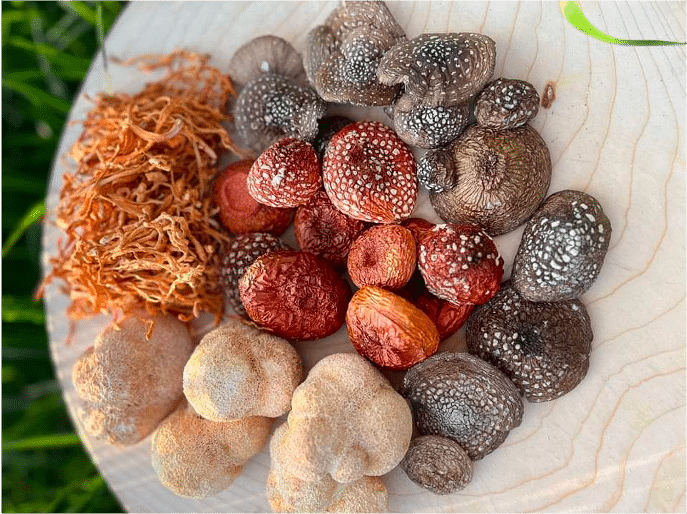Amanita Muscaria, commonly known as the Fly Agaric mushroom, is a striking and enigmatic fungus that has captured the human imagination for centuries. Its distinctive bright red cap adorned with white spots is instantly recognizable, and it has woven itself into the tapestry of human history, culture, and folklore.

Historical Significance:
The history of Amanita Muscaria dates back to ancient times. It has been used in various cultural practices and rituals, often associated with shamanism and spirituality. In Siberia, indigenous peoples have a long history of consuming the mushroom to induce altered states of consciousness, believing it provides a direct link to the spirit world. This historical usage has left an indelible mark on the cultural significance of the Fly Agaric.
Cultural Significance:
The Amanita Muscaria’s cultural importance extends beyond its use in shamanic practices. It has made its way into art, literature, and folklore. The mushroom has been a subject of fascination for artists and writers, with its distinctive appearance often serving as a symbol of the mysterious and the magical. In many cultures, it is a recurrent theme in folk stories and traditions, sometimes as a symbol of luck, sometimes as an embodiment of danger and temptation.
Legends and Mythology:
The Fly Agaric mushroom has a rich tapestry of legends and myths surrounding it. In some cultures, it is believed to be the “fruit of the gods” and a powerful agent of transformation. In others, it is associated with the mischievous and unpredictable forces of nature. Amanita Muscaria has been linked to the origins of Santa Claus, with its red and white colors mirroring the iconic image of St. Nick. These myths and legends have evolved over time, shaping the mushroom’s enduring place in our collective imagination.
Today, Amanita Muscaria’s legacy continues to captivate those interested in the intersections of history, culture, and nature. While its psychoactive properties have drawn much attention, its profound cultural and historical significance should not be overlooked. It serves as a reminder of the enduring connection between humans and the natural world and the power of mushrooms to influence our cultural and spiritual landscapes.
